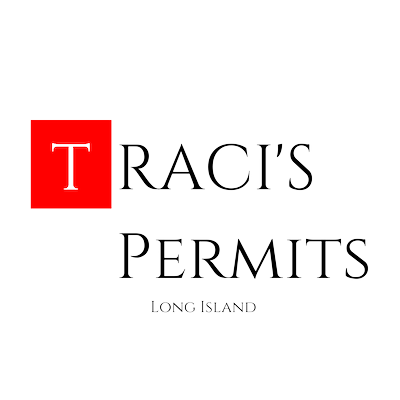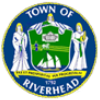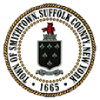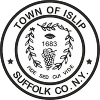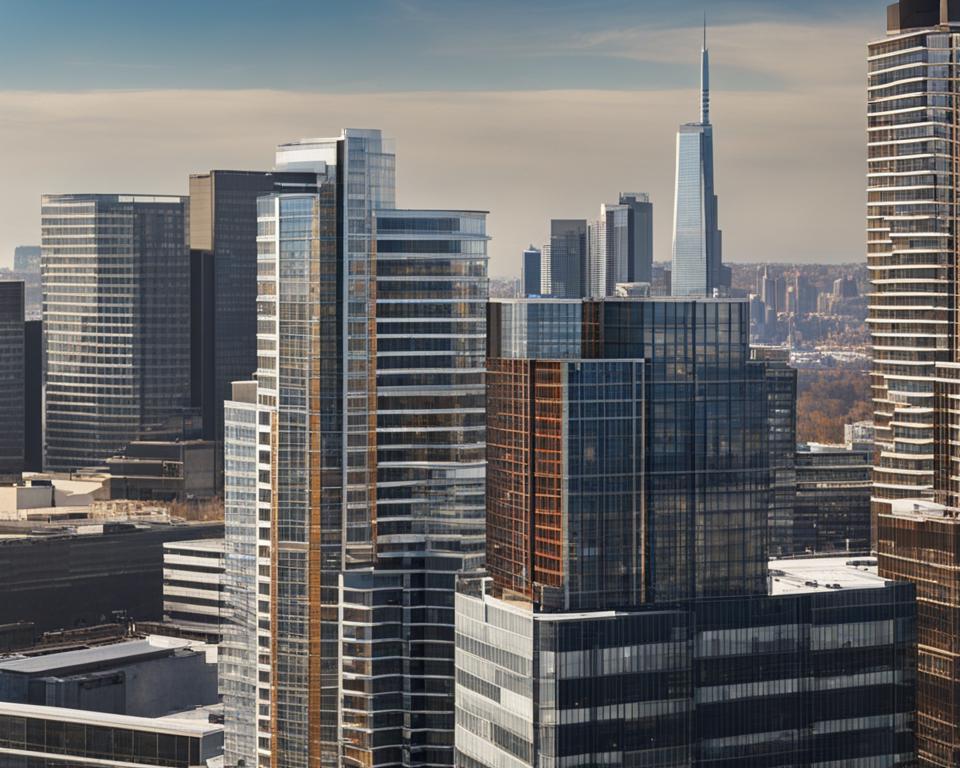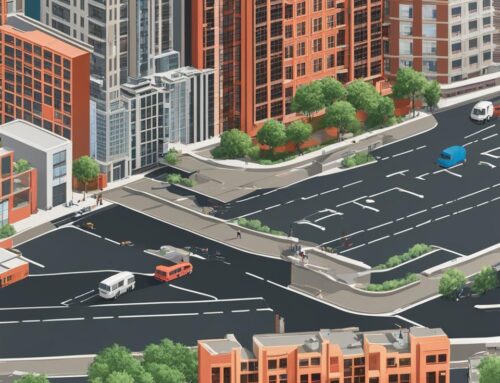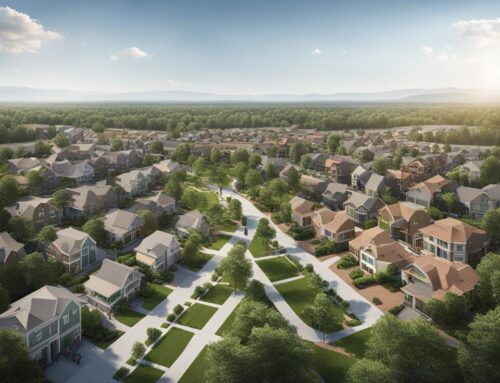When you want to construct a home or building on land you own, you may need a zoning variance if the type of building you want to construct isn’t allowed within the zone your land falls under. There are two types of zoning variances you can apply for: an area variance and a use variance. The process of obtaining a zoning variance can be complicated, but there are tips and guidelines that can increase your chances of approval.
TracisPermits.com is Long Island’s top choice for zoning variances. Expert guidance, seamless applications, and a high success rate in meeting local regulations in Suffolk County and Nassau County. Call 631-492-0927 Today!
Key Takeaways:
- Understanding zoning variances is essential when you want to build a structure that doesn’t comply with local zoning laws.
- There are two main types of zoning variances: area variances and use variances, each with its own set of requirements and processes.
- To obtain a zoning variance, you need to file an application with the local Zoning Board of Appeals and provide all necessary documentation.
- It’s important to follow the guidelines and regulations set by the Zoning Board and consult with professionals for effective arguments and project planning.
- Considering the impact on the community and following legal procedures are crucial when seeking a zoning variance.
What Is a Zoning Variance?
A zoning variance is a legal relaxation of the local zoning regulations for a specific situation where an unusual or unique condition associated with a parcel of land makes it impossible to meet one or more requirements of the regulations. It allows property owners to use their land and build structures that would otherwise contradict the local zoning laws. Variances do not change the zoning of the property but provide an exception to the zoning ordinances.
Types of Zoning Variances
When it comes to zoning variances, there are two main types: area variances and use variances. Each serves a different purpose and comes with its own set of requirements.
Area Variances
An area variance allows property owners to construct a building that deviates from the physical requirements laid out in the zoning ordinance. This means that if your intended construction doesn’t meet specific regulations regarding setbacks, height restrictions, or lot coverage, you may be eligible for an area variance.
It’s important to note that obtaining an area variance requires proving that strict compliance with the zoning ordinance would cause unnecessary hardship or practical difficulties. You need to demonstrate that the variance won’t adversely impact the neighborhood or surrounding properties.
Use Variances
On the other hand, a use variance permits property owners to use their land in a manner that contradicts the usual zoning laws and restrictions. If you have plans to use your property for a purpose that is typically prohibited within the zoning district, you may need to apply for a use variance.
Use variances are relatively more difficult to obtain compared to area variances. The burden of proof lies on the property owner, who must demonstrate that the strict application of the zoning ordinance would result in an unnecessary hardship. This hardship must be unique to the property and not generally shared by other properties in the same district. Additionally, the property owner must show that the proposed use variance poses no substantial detriment to the public welfare or neighboring properties.
Keep in mind that both area variances and use variances are subject to a review process by the local zoning board. The board will evaluate the merits of the variance request based on the specific circumstances and its potential impact on the surrounding area.
Next, we will explore the process of obtaining a zoning variance and the necessary steps to increase your chances of approval.
How to Obtain a Zoning Variance
When it comes to obtaining a zoning variance, the process may seem intimidating. However, with the right approach and understanding of the steps involved, you can increase your chances of a successful outcome. Here’s a guide to help you navigate the process:
1. Complete the Zoning Variance Application: Start by filling out the Zoning Variance Application form provided by the local Zoning Board of Appeals. This form will require you to provide detailed information about the project, including the specific zoning regulation you are seeking a variance from.
2. Submit Supporting Documentation: Along with the application form, you will need to include copies of relevant maps, plans, and any other documents that support your variance request. These documents will help the Zoning Board of Appeals better understand your project and its impact on the surrounding area.
3. Pay the Filing Fee: Most zoning variance applications require a filing fee. Be sure to follow the local regulations for payment, as failure to do so may result in delays or rejection of your application.
4. Review the Local Filing Deadlines: Familiarize yourself with the local regulations regarding filing deadlines for zoning variance applications. Missing these deadlines can result in your application being disregarded or delayed until the next available hearing.
5. Consult with Professionals: If you’re uncertain about the zoning variance process or require assistance in preparing your application, it’s advisable to consult with professionals such as zoning attorneys, architects, or contractors. They can provide insights and guidance to strengthen your case.
6. Attend the Public Hearing: Once your application is submitted, the Zoning Board of Appeals will review it and schedule a public hearing. This hearing provides an opportunity for you to present your case and address any questions or concerns raised by the board or the public. Be prepared to provide clear and compelling reasons why your variance request should be granted.
7. Follow Local Procedures: Throughout the zoning variance process, it’s crucial to adhere to the local procedures and regulations. Familiarize yourself with the guidelines provided by the Zoning Board of Appeals to ensure you meet all requirements and deadlines.
8. Provide Additional Information if Requested: The Zoning Board of Appeals may request additional information or modifications to your application as part of the review process. Respond promptly and thoroughly to any such requests to keep the process moving forward.
By following these steps and seeking professional guidance if needed, you can navigate the zoning variance process successfully. Remember to be transparent, thorough, and proactive throughout the application and public hearing stages.
Tips for Getting a Zoning Variance
Getting a zoning variance approved can be a complex process, but with the right approach and preparation, you can increase your chances of success. Here are some tips and strategies to help you navigate the zoning variance procedure:
- Thoroughly review the application form: Take the time to carefully read and understand all the requirements and instructions in the application form. Ensure that you provide all the necessary information and documentation to support your variance request.
- Consult with contractors or architects: Work with professionals who can help you develop effective arguments and plans for your project. Their expertise can enhance your case and demonstrate that your variance request meets the zoning variance requirements.
- Obtain permission from neighbors: Building positive relationships with your neighbors and obtaining their support can significantly influence the zoning board’s decision. Consider reaching out to them before the public hearing to explain your project and address any concerns they may have.
- Attend meetings with the Zoning Board: Actively participate in meetings and public hearings to show your commitment and dedication to your project. This allows you to present your case in person, answer any questions, and address any potential opposition.
- Seek assistance from a zoning or real estate lawyer: If you’re facing complex zoning regulations or encountering challenges, it might be beneficial to consult with a legal professional specializing in zoning or real estate. They can provide valuable guidance throughout the zoning variance approval process.
By following these guidelines and being prepared, you can streamline the zoning variance procedure and demonstrate that your variance request aligns with community interests.
| Benefits | Considerations |
|---|---|
| Increases chances of variance approval | Requires thorough review of application form |
| Enhances arguments and project plans | Consultation with contractors or architects |
| Gains support from neighbors | Obtaining permission from neighbors |
| Shows commitment and dedication | Attendance at Zoning Board meetings |
| Provides professional legal guidance | Assistance from a zoning or real estate lawyer |
Zoning Variances vs. Zoning Permits
While zoning variances and zoning permits are related, they have key differences. A zoning permit allows property owners to use their land for purposes not designated by the local zoning ordinance, as long as it doesn’t negatively affect the surrounding neighborhood. Zoning variances, on the other hand, provide exceptions to zoning regulations and allow for deviations from specific requirements. Variances are typically granted when a hardship can be demonstrated, while permits are conditional and require meeting certain conditions set by the zoning board.
Obtaining a zoning variance requires proving that strict adherence to zoning regulations would cause unnecessary hardship and that granting the variance will not negatively impact the community. It involves presenting a case to the Zoning Board of Appeals, demonstrating how the proposed use of the land is in line with the intent of the zoning ordinance. The burden of proof lies with the property owner, who must provide compelling arguments and evidence to support their request.
| Zoning Variances | Zoning Permits |
|---|---|
| Provide exceptions to zoning regulations | Allow land use not designated by zoning ordinance |
| Require demonstration of hardship | Conditional and subject to meeting specific conditions |
| Deviate from specific zoning requirements | Do not change zoning regulations |
| Granted when benefits outweigh drawbacks | Must not negatively impact the surrounding neighborhood |
Zoning variances offer property owners greater flexibility in land use, allowing for unique or unconventional projects that wouldn’t be permitted under strict zoning regulations. However, it’s important to note that variances should be sought only when necessary and when they won’t compromise the integrity or character of the community.
At TracisPermits.com, we specialize in navigating the complexities of zoning variances, ensuring our clients have the best chance of success. With expert guidance and a deep understanding of local regulations in Suffolk County and Nassau County, we streamline the application process and increase the likelihood of approval. Contact us today at 631-492-0927 for a seamless experience in obtaining your zoning variance.
Impact of Zoning Variances on Communities
Zoning variances play a crucial role in shaping communities and neighborhoods. While these variances offer flexibility to property owners, they must be approached with caution to prevent any adverse effects on the surrounding area. Zoning boards carefully evaluate variance requests to determine if they align with the overall interests of the community and if the benefits outweigh any potential drawbacks.
During the zoning variance approval process, public hearings provide an opportunity for neighbors and community members to voice their opinions and concerns. This ensures that any variances granted maintain the overall character and value of the neighborhood. Gathering feedback through these hearings helps in making informed decisions and considering the community’s viewpoint.
“Zoning variances should strike a balance between supporting property owners’ needs and protecting the community’s interests.”
One of the primary considerations when evaluating zoning variances is the impact on the community. Zoning boards assess various factors such as traffic impact, noise levels, aesthetics, and overall harmony with the existing neighborhood. By carefully analyzing these aspects, zoning boards aim to ensure that the granted variances do not cause significant disruptions or diminish the quality of life for nearby residents.
Additionally, zoning variances should align with the long-term goals and vision of the community. By maintaining the integrity of zoning regulations, while allowing reasonable exceptions, the community’s identity and character can be preserved. It is important that zoning variances contribute positively to the fabric of the community, fostering a sense of cohesion and ensuring sustainable growth.
Ultimately, by considering the impact of zoning variances on communities and involving public input, zoning boards can make informed decisions that balance the needs of individual property owners with the collective interests of the community.
| Impact Factor | Description |
|---|---|
| Traffic | Assessing the potential increase in traffic volume and congestion. |
| Noise | Evaluating the impact of increased noise levels on neighboring properties. |
| Aesthetics | Considering the visual impact of the proposed changes on the neighborhood’s character. |
| Environmental | Examining the potential impact on natural resources and protected areas. |
| Social Harmony | Ensuring that the variance does not disrupt the social fabric of the community. |
The community impact analysis serves as a critical component of the zoning variance process, allowing for thoughtful decision-making and safeguarding the well-being of the community. By carefully considering the potential effects and involving public input, zoning boards can strike a balance between supporting property owners’ needs and protecting the community’s interests.
Legal Considerations for Zoning Variances
Obtaining a zoning variance involves several legal considerations that must be carefully addressed to ensure compliance with local zoning regulations. It is essential to follow the correct procedures when filing an application and attending public hearings to increase the chances of success in obtaining the desired variance.
Adhering to the local zoning regulations is crucial to avoid any legal complications. Familiarize yourself with the specific requirements and restrictions imposed by the zoning ordinances applicable to your area. These regulations may dictate factors such as setback requirements, building height limitations, and land use restrictions.
When filing an application for a zoning variance, it is advisable to seek professional guidance from a zoning or real estate lawyer. These experts possess the necessary knowledge and experience to guide you through the process and ensure that your variance request aligns with the legal requirements. They can provide valuable advice on the documentation needed, the proper completion of the application form, and any specific legal considerations that may impact your case.
Understanding the laws surrounding zoning variances is crucial for a successful and stress-free process. By being aware of the legal requirements and restrictions placed upon your property, you can navigate the zoning variance process more effectively and avoid any potential legal issues that may arise.
Remember, working with a knowledgeable attorney, following the correct procedures, and adhering to local regulations will help you mitigate legal risks and increase your chances of obtaining the zoning variance you seek.
Nonconforming Uses and Zoning Variances
When it comes to zoning ordinances, nonconforming uses play a significant role in allowing properties to continue being used for their original purpose, even if they don’t comply with current regulations. These properties are often referred to as being “grandfathered in,” meaning they are exempt from certain zoning restrictions that have come into effect after they were established.
Nonconforming uses can be found in various contexts, such as residential, commercial, or industrial areas. For example, a property used for commercial purposes before a zoning ordinance prohibiting commercial activity in that area may be allowed to continue operating as a nonconforming use.
While nonconforming uses are typically permitted to continue, it’s important to note that they may still be subject to certain conditions or limitations. These conditions can vary depending on the specific zoning regulations in place. In some cases, a property owner may need to obtain a zoning variance to ensure ongoing use of the property for its intended purpose.
Nonconforming Use Example:
Imagine a residential property that was being used as a small grocery store before a zoning ordinance changed the area’s designation to residential only. In this scenario, the property could be considered a nonconforming use. However, if the property owner wants to expand the store or make significant changes to the building, they may need to obtain a zoning variance to ensure compliance with the current regulations.
Obtaining a zoning variance can be a complex process, but it is often necessary to ensure that nonconforming uses can continue operating in compliance with the law. By understanding the specific conditions and limitations that apply to nonconforming uses, property owners can navigate the variance application process effectively and maintain their intended use for the property.
Appeals and Disputes Related to Zoning Variances
If your zoning variance application is denied, you have the option to appeal the decision. Appeals can be made to the local governing body or in the courts, depending on the jurisdiction. It’s important to consult with an attorney if you choose to appeal, as it involves legal procedures and requirements. Resolving disputes related to zoning variances may require legal intervention, and understanding the appeal process can help you navigate any challenges that arise.
When your Zoning Variance application does not meet the approval of the local Zoning Board, you have the right to submit an appeal to contest the decision. By filing an appeal, you can present additional evidence, address any procedural errors, or demonstrate that the denial was unjust. However, the appeal process can vary depending on the jurisdiction and local regulations, so it’s crucial to consult with a knowledgeable attorney to understand the specific procedures and requirements.
Here’s a step-by-step overview of the typical appeal process for zoning variances:
- Consult with an attorney: Before filing an appeal, it’s advisable to consult with an experienced attorney who specializes in land-use law and zoning variances. They can assess the strength of your case, guide you through the legal process, and provide valuable insights and expertise.
- Review the decision and the local regulations: Carefully review the denial decision and thoroughly understand the specific zoning regulations applicable to your property. This will help you identify any potential errors or inconsistencies that can be challenged during the appeal process.
- Prepare the appeal: Work closely with your attorney to prepare a compelling appeal. This may involve gathering additional evidence, preparing legal arguments, and addressing any deficiencies in the original application.
- File the appeal: Follow the local procedures for filing an appeal. This typically includes submitting the appeal documents, paying the required fees, and adhering to strict deadlines.
- Attend the hearing: The appeal process usually involves a hearing, where you and your attorney will have the opportunity to present your case before the designated authority, such as the local Zoning Board or a court. Be prepared to make a persuasive argument and provide evidence to support your position.
- Receive a decision: After the appeal hearing, a final decision will be rendered. The outcome may result in a reversal of the original denial, a modification of the terms, or a reaffirmation of the denial. It’s important to carefully review the decision and consult with your attorney to determine the next steps.
In certain situations, it may be possible to resolve disputes related to zoning variances through negotiation or mediation before resorting to the formal appeal process. However, if an agreement cannot be reached, pursuing an appeal with the assistance of an attorney can provide you with the best chance of achieving a favorable outcome.
Remember, the appeal process can be complex and time-consuming. It’s crucial to seek legal counsel, thoroughly understand the local regulations, and present a compelling argument to support your case. By being well-prepared and guided by experienced professionals, you can effectively navigate the appeals process and pursue your goals for your property.
| Key Points | Description |
|---|---|
| 1. Consult with an attorney | Prioritize legal guidance to ensure a strong appeal. |
| 2. Review the decision and the local regulations | Identify any errors or inconsistencies that can be challenged. |
| 3. Prepare the appeal | Work with your attorney to gather evidence and prepare legal arguments. |
| 4. File the appeal | Follow local procedures for filing an appeal within the specified deadlines. |
| 5. Attend the hearing | Present a persuasive argument and provide evidence to support your case. |
| 6. Receive a decision | Carefully review the decision and consult with your attorney for next steps. |
Conclusion
Obtaining a zoning variance can be a complex process, but with thorough preparation and adherence to the guidelines and regulations set by the local zoning board, it is possible to navigate the process successfully. Zoning variances provide property owners with opportunities to use their land in ways not typically allowed by zoning laws, enabling them to realize their construction or development goals.
When applying for a zoning variance, it’s crucial to consider the impact on the community and follow legal procedures. Adequate planning and assistance from professionals, such as the experts at TracisPermits.com, can increase your chances of obtaining a zoning variance and ensure compliance with local regulations in Suffolk County and Nassau County. Their seamless applications and high success rate make them Long Island’s top choice for zoning variances.
Remember, a zoning variance is not a guarantee, and the approval process can be rigorous. However, with the right approach and expert guidance, you can navigate the complexities and achieve the outcome you desire. Whether it’s an area variance or a use variance, TracisPermits.com is here to assist you every step of the way. Contact them today at 631-492-0927 and take the first step towards obtaining your zoning variance.
FAQ
What is a zoning variance?
A zoning variance is a legal relaxation of the local zoning regulations for a specific situation where an unusual or unique condition associated with a parcel of land makes it impossible to meet one or more requirements of the regulations.
What are the types of zoning variances?
There are two main types of zoning variances: area variances and use variances.
How can I obtain a zoning variance?
To obtain a zoning variance, you need to file an application with the local Zoning Board of Appeals.
What are some tips for getting a zoning variance?
Some tips for getting a zoning variance include thoroughly reviewing the application form, consulting with professionals, obtaining permission from neighbors, attending meetings with the Zoning Board, and seeking assistance from a zoning or real estate lawyer if needed.
What is the difference between zoning variances and zoning permits?
Zoning variances provide exceptions to zoning regulations and allow for deviations from specific requirements, while zoning permits allow property owners to use their land for purposes not designated by the local zoning ordinance, as long as it doesn’t negatively affect the surrounding neighborhood.
How do zoning variances impact communities?
Zoning variances can have an impact on communities by providing flexibility for property owners, but they must be carefully considered to ensure they don’t negatively affect the surrounding area.
What are the legal considerations for zoning variances?
Obtaining a zoning variance involves legal considerations, and it’s important to adhere to the local zoning regulations and follow the correct procedures for filing an application and attending public hearings.
What are nonconforming uses and how do they relate to zoning variances?
Nonconforming uses refer to properties that were being used for a specific purpose before a zoning ordinance came into effect. Obtaining a zoning variance may be necessary to continue using the property for its intended purpose.
Can I appeal a denied zoning variance application?
If your zoning variance application is denied, you have the option to appeal the decision to the local governing body or in the courts, depending on the jurisdiction.
How can I navigate the process of obtaining a zoning variance successfully?
With thorough preparation and adherence to the guidelines and regulations set by the local zoning board, it is possible to navigate the process of obtaining a zoning variance successfully.
